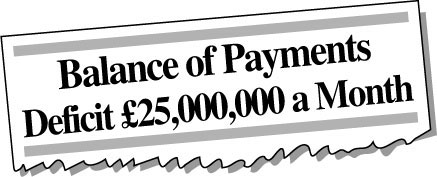1.3 Rounding in general
Numbers are often approximated to make them easier to handle, but sometimes it doesn’t help very much to round to the nearest 10 or the nearest 100 if the number is very large. For example, suppose the monthly balance of payments deficit was actually £24 695 481. Rounded to the nearest 10, it's £24 695 480; and to the nearest 100, it's £24 695 500. But £24 695 500 is still a complicated number to deal with in your head. That's why it was rounded to £25 000 000 in the newspaper headline. In fact numbers can be rounded to any level of accuracy – to the nearest 1000, or the nearest 10 000 or even to the nearest million (as in the newspaper headline).

The rule for rounding can be generalised as follows.
Rounding to the nearest….
Look at the digit to the right of the one you are rounding to:
if the digit is 0, 1, 2, 3, 4 round down;
if the digit is 5, 6, 7, 8, 9 round up.
Notice that this general rule agrees with rounding to the nearest hundred (the digit to the right of the hundreds digit is the tens digit) and rounding to the nearest ten (the digit to the right of the tens digit is the units digit).
Thus, £24 695 481 rounded to the nearest 1000 is £24 695 000 and rounded to the nearest million, or 1000 000 is £25 000 000.
